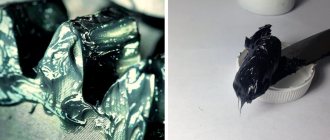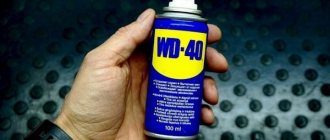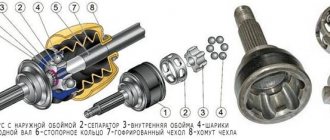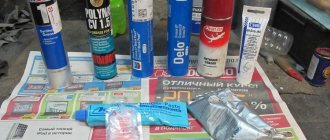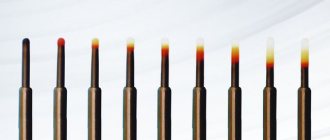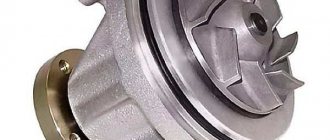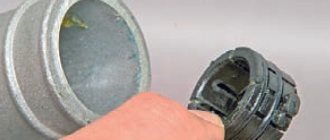Silicone Grease is a universal waterproof lubricant based on silicone and a thickener. Widely used among motorists, industry, and at home. Its main advantages are high adhesion (the ability to stick to a surface), as well as the ability do not enter into a chemical reaction with the surface. The lubricant is absolutely not afraid of water, and it can be used with rubber, plastic, leather, vinyl and other materials.
Most often, car owners use silicone lubricants for rubber seals . In addition, it has a number of unique properties and advantages, which we will discuss further.
Why do you need silicone grease in a car?
The lubricant is used to protect against corrosion and oxidation of body parts and other decorative parts of the car from drying out and exposure to ultraviolet radiation.
Silicone lubricant, having a high fluidity rate, is able to penetrate into the most difficult to reach areas of the car body and interior.
Application of silicone grease in a car:
- Preserves decorative parts of the car;
- The lubricant is neutral to porous car finishing materials;
- Widely used to eliminate squeaks and bugs in the car interior, while preserving rubbing plastic parts;
- Silicone grease does not contain water, so it can be used to lubricate door locks;
- Its properties are very useful for lubricating wiper blades; it is absorbed and, without corroding the rubber, gives it its original properties, without leaving marks on the glass;
- Silicone lubricant is recommended for treating tires during storage;
- It is also good to cover the battery terminals with silicone; it does not conduct current and will protect them well from oxidation;
- Rugs and wheels can also be treated with silicone grease; it will protect against dirt sticking to them/
Areas of application of the material
Lubricants can be used not only for processing automotive parts, but also in everyday life.
Using the product in a car
Which machine elements can be treated with lubricant:
- plastic interior parts, for example, control panel or center console;
- the substance is used for rubber bands and seals on car doors, luggage compartment, hood, windows, fuel tank cap, etc.;
- hinges and locks on car doors;
- starters;
- electric windshield wiper motors;
- guide bushings on seats, ventilation hatches, and window regulators;
- rubber elements of windshield wiper blades;
- end parts of car tires;
- car wheel rims;
- rugs;
- bushings for stabilizers, cushions fixing the exhaust pipe, cooling system hoses, silent blocks, etc.;
- places on the car body where the paintwork has chipped off, this helps prevent the formation of corrosion in the future;
- plastic car bumpers if scratches begin to appear on their surface;
- seat locks in the cabin;
- seat belts.
From the video filmed by the Auto Chemicals and Auto Cosmetics channel in Kyrgyzstan, you can learn about the use of lubricants.
What is silicone grease
Silicone grease is a mixture based on silicone oil with the addition of many components. The product is available in both creamy form and spray cans.
The main advantages of silicone are the following qualities:
- Silicone grease can be used at any negative and positive temperatures. Ideal for areas with constant heat. At low temperatures it does not lose its fluidity.
- The lubricant is not flammable, so it is not afraid of accidental sparks and open fire.
- Does not conduct electric current. It is an excellent insulator.
- Excellent protection against corrosion.
- Silicone adheres equally well to objects made of plastic, metal, glass and various polymers.
- The composition is absolutely safe for humans and does not cause allergic reactions on the skin or in the respiratory tract.
- Silicone grease is chemically inert - it will not loosen or soften the rubber and will not harm the plastic, while creating a continuous protective layer of polymer on the surface.
- The film that appears after application does not allow water to pass through and repels it.
Features of lubricant selection
When purchasing a product, you must be guided by the following criteria:
- Price. Very cheap products usually cannot boast of good performance and high quality.
- Availability. It is important that in the city where you live there is a store where, if necessary, you can quickly purchase the substance.
- The main criterion is quality. We recommend purchasing lubricants only from trusted and certified stores. If a seller operates without a license, it is quite possible that he will buy low-quality and counterfeit products and pass them off as original ones.
- Type of lubricant. When choosing a type, you need to decide for what purpose the product will be used. To treat hard-to-reach surfaces, you will need a spray product. In other cases, you can buy a paste or gel.
- Please also pay attention to the technical specifications. They are indicated on the product label. Taking into account the technical properties and features, you can choose a high-quality product that is suitable for achieving your goals.
- Manufacturer of the substance. The products described above have proven themselves to our compatriots. We recommend choosing lubricants from well-known brands so as not to purchase a low-quality substance.
You can learn about the use of lubricant from the video filmed by the bushkraftell channel.
What can be replaced?
Silicone grease is a universal product that does not make sense to replace with other substances. The issue of replacing the product is faced by motorists who, for some reason, cannot buy a lubricant in stores. In such cases, Litol-24 can be used instead of silicone.
Manufacturers of silicone lubricants
Having decided on the type of lubricant based on its physical state, you need to choose a company or brand. There are now as many of them as there are any other products in the field of auto chemicals.
We list the popular and good brands of manufacturers of silicone lubricants for cars:
- StepUp.
- Eltrans.
- BBF.
- HORSE.
- LiquiMoly.
- MS-sport.
- Molykote.
StepUp
This manufacturer is located in the USA. Available in a can. Apply by spraying using a tube.
Silicone grease StepUp effectively protects rubber products and seals that operate in the temperature range from -50 to +200 degrees.
Eltrans
Eltrans lubricant is produced in Russia. Suitable for lubricating parts operating in different temperature ranges.
The composition contains a fragrance that hides the specific smell of chemicals.
BBF
Also produced in the Russian Federation. Release form: in the form of a can. Apply by spraying.
Used for application to rubber and plastic products found in cars. Creates a protective transparent film on the coating.
HORSE
HORS lubricant is also produced in Russia. The plus is that after application, when the layer of silicone grease has dried, it lasts a long time.
The disadvantages include: unpleasant chemical smell; inconvenience of application.
LiquiMoly
The name Liqui Moli, I think, is on everyone’s lips. This is a popular German nonsense from a manufacturer of auto chemical products. Available in tubes containing gel. They are convenient to apply. Aerosol types are also available. This lubricant penetrates into hard-to-reach places.
All types of manufactured lubricants of this brand can be used in any climatic areas. In addition, they do not smell of unpleasant chemical odors.
MS-sport
Lubricating silicone products are produced in Russia by the VMPAVTO company. The lubricant contains fluoroplastic, which is a dielectric substance (poorly conductive of electric current).
Has no smell. The downside is that MS-Sport lubricant is difficult to apply due to the thick mass of the gel.
Molykote
Molikot's products are also very famous. Produced in Belgium. Available in aerosol form in a can. Apply by spraying.
It has excellent water-repellent properties, does not have unpleasant chemical odors and retains its properties in any temperature conditions.
Requirements for silicone lubricants for rubber seals
Previously, mineral or essential oils were used to lubricate the rubber seals of a driver's car. However, their use led to swelling, shrinkage and cracking of the rubber.
Silicone lubricant for rubber car seals saved drivers from these unpleasant consequences of processing. However, destructive chemical compounds are also found in the “silicone environment”. Therefore, lubricants of this type also have important requirements:
- The silicone grease must be compatible with the material of the seal and adjacent parts.
- Performance properties must be maintained over a wide temperature range.
- The lubricant must protect rubber products from aging and cracking.
- After treatment with silicone lubricant, friction and wear of parts should be reduced.
- Applying silicone grease should improve the tightness of the connection.
- The lubricant must provide a separation effect.
- The operating time of the lubricant should be as long as possible.
- Silicone-based lubricant must be resistant to washout and other environmental influences.
Instead of an epilogue
Proper selection and use of silicone lubricants will allow high-quality protection of working units and mechanisms that make up their materials, extending the service life of the entire structure. They will expand the possibilities of their use in conditions of low and elevated temperatures, restore not only visual aesthetics, but also the elasticity of rubber parts, protecting them from external damage. Provided you follow the instructions for use consistently, you can obtain a universal and multifunctional product for protection and care with a wide range of action.
Best brands and price
To choose a high-quality lubricant for your car, we recommend that you familiarize yourself with the list of the most popular products.
Liquid Moly Silicone-Fett
This product belongs to the category of waterproof; lubricant production is established in Germany. The operating temperature range varies from -40 to +200 degrees. In this case, dripping is possible at temperatures above 200 degrees. The product is resistant to cold and hot liquids, the substance practically does not age. The lubricant is characterized by an excellent lubricating effect, as well as a high adhesion coefficient.
We recommend: How to understand that engine decarbonization is needed: do it yourself
Due to its viscosity properties, the product can be used to treat small and large aggregates and assemblies. Judging by the reviews, the lubricant perfectly protects plastic, rubber, and metal elements of the car body. Some users claim that when using the substance at temperatures above 30 degrees Celsius, leakage of the product was observed. The cost of one tube of lubricant with a volume of 50 grams is about 300 rubles on average.
Molikot 33 Medium
Belgian-made lubricant is characterized by excellent quality and good performance characteristics. This product belongs to the class of heat and frost resistant. The operating temperature range varies from -73 to +204 degrees. Molikot lubricant is characterized by good viscosity, which makes it possible to use it in hard-to-reach mechanisms and components. According to consumer reviews, the substance treats plastic interior elements well, preventing them from squeaking. The cost of one 100 gram canister varies around 1,200 rubles on average.
StepUp SP5539
The operating range of this foreign-made heat-resistant substance is from -50 to +220 degrees. Included with the product, the manufacturer supplies a special tube, with which you can process surfaces and components located in hard-to-reach places. The StepUp product is characterized by a liquid consistency, making it possible to lubricate even small mechanisms.
The product perfectly protects steel, rubber, and plastic components and machine parts from moisture. The product can be used to treat rubberized parts and seals on car doors, trunks and windows. In addition, the StepUp product well protects the wiring of your car, as well as the battery terminals, from the effects of rust. If we talk about price, the cost of one can of lubricant with a volume of 284 grams varies around 300-400 rubles.
A brief overview of StepUp SP5539 lubricant can be seen in the video from the Unpacking Auto Products channel.
Felix
The use of this lubricant allows the formation of a protective polymer layer on the working surface, which will provide excellent water-repellent characteristics and good slipperiness. Due to this, the substance can be used in a wide temperature range. The product can be used on door locks, hinges and other mechanical components. Thanks to its use, the level of noise and extraneous sounds is reduced. Lubrication of rubberized body elements helps prevent cracking, rapid wear and freezing, and maintains the elasticity of parts. The substance Felix comes to the market in a special tube with an elongated spout. This makes it possible to process hard-to-reach mechanisms. One tube of 400 ml will cost about 150 rubles.
MS Sport
Russian-made lubricant has a high silicone content in the substance base along with fluoroplastic. Thanks to this, the product can be used in pairs if one of the elements is made of metal and the other of plastic, rubber or leather. The lubricant effectively retains its parameters at air temperatures from -50 to +230 degrees. Due to its technical properties and characteristics, the product can be used in everyday life.
In terms of consistency, the substance is a semi-solid product, so it is not advisable to use it for treating hard-to-reach places. But the product does an excellent job of lubricating high-speed bearing devices and other lightly loaded mechanisms, rolling and sliding parts. Silicone treatment provides effective protection of elements from rust, dirt and moisture due to water-repellent characteristics. The lubricant does not allow tension to pass through and is not washed off; it removes squeaking. Due to the fact that as a result of processing the product forms a frost-resistant film, possible freezing of parts is prevented. The cost of one package of 400 grams is about 800-1000 rubles.
Silicote
The product is made in Russia, the operating temperature range of which is in the region of -50 - +230 degrees. The lubricant can be used in various areas, not only in cars. The lubricant has a medium viscosity, so its use is more relevant on large mechanisms and surfaces. The product has good adhesion. Suitable for processing rubber components, locks, guide bushings, fans and other devices, making it a versatile tool. On average, one 30 gram can of silicone lubricant costs about 150-200 rubles.
OKS 1110
Initially, this lubricant was developed for the treatment of kitchen household appliances; it is considered food grade. Designed for working with plastic parts, therefore suitable for use in machines. The use of the substance allows you to soften silicone-based plastic, for example, silicone rubber. As a result of the treatment, stability is ensured without drying out or hardening of the material. The substance is resistant to solvents, ethanol, hot and cold liquids, and ethylene glycol. The use of lubricant on sliding surfaces that are exposed to oxygen is not allowed. The cost of one 10-gram can of German-made silicone substance is about 500 rubles.
Eltrans-N
The domestically produced heat-resistant product is characterized by high performance characteristics and helps improve the appearance of the treated surface. The substance contains flavorings. The use of lubricant is allowed to remove crickets and squeaks from the control panel of the machine. You can use a lubricant to restore the natural color of leatherette interior parts. The operating temperature range varies from -40 to +200 degrees, the viscosity of the substance is average, as a result of which it is considered universal. The cost of one 70 gram canister varies around 50-120 rubles on average.
High Gear
High-quality American-made silicone product is characterized by low viscosity. As a result, the lubricant has excellent penetrating ability. Its use is allowed for processing lock cylinders, door hinges and other components and assemblies. The price for one can of aerosol lubricant with a volume of 284 grams is about 250-400 rubles.
Hado Verilub
This is a high-quality high-temperature option that has received recognition from our compatriots. Hado grease is resistant to cold and hot water, its operating temperature range is from -62 to +250 degrees. The lubricant forms a protective layer on the treated surfaces, preventing the negative effects of corrosion, moisture and dirt on the parts. The use of the substance allows you to get rid of the squeaking of plastic and rubber elements; treatment of drive belts is allowed. If there is a slight malfunction of the locks, lubrication can restore the working condition of the mechanisms. As a result of lubrication, the elasticity of the sealing components, as well as the elasticity of the seals, is perfectly restored.
Hado lubricant helps prevent car doors and hatches from freezing. With timely use, the product will effectively restore the color of rubber on car tires and the appearance of vinyl upholstery. Some users claim that the quality of the lubricant has dropped recently, but there is a possibility that such reviews are due to the use of counterfeit products. The main advantage of the substance is its good cost-quality ratio. The price for one 150 gram can of product will be about 200 rubles.
Advantages and disadvantages
Advantages of silicone grease for seals:
- Product versatility.
- Safety from an environmental point of view.
- Most of the products on the market are characterized by high quality as well as performance.
- A price affordable for most consumers. It should be noted that the price range of silicone lubricants is quite large. Each consumer will be able to buy the product based on their financial capabilities.
- Wide range of substances. You can purchase products designed specifically for rubber parts or for plastic elements.
- Water resistance of lubricants. Even when exposed to hot water, high-quality lubricants are not washed off.
Disadvantages are typical for certain types of lubricants. The main disadvantage for many products is the need for regular use. Often, lubricants quickly lose their functions after application, so the car owner has to periodically reuse them.
Functions and types of lubricant
Silicone grease on the automotive market is represented by various types, each of which has its own characteristics.
Aerosol
Aerosols are the most convenient. However, during spraying, the product can get not only into the necessary areas, but also onto adjacent parts. The principle of operation is that the lubricant is sprayed under high pressure. During work, you can get on clothes and upholstery. In this case, you should immediately clean the contact areas, as greasy stains may remain.
Using a spray, you can treat all mechanisms that are in motion, interior elements made of plastic, as well as parts located outside the car.
We recommend: Everything about engine oil pressure: what it should be, how to measure it
You may also be interested in an article by our expert, in which he talks about the features of using anti-gravel in cans.
We also recommend reading our specialist’s article on how to choose and use Movil for a car.
Liquid
High-temperature lubricant is first applied to a special napkin, which is then used to process the necessary parts. Since the lubricant is liquid, it freely penetrates into hard-to-reach places, while minimally polluting the area around it.
If you still have to remove dirt from the upholstery, it is best to use an alcohol solution, vinegar, or acetone. But if you want to achieve the perfect result, then use the services of a car wash.
Additionally, we recommend reading an informative and useful article that describes in detail liquid sound insulation for cars.
Another interesting procedure is coating a car with liquid rubber. Our expert will tell you what the features of this process are and how to carry it out correctly.
Plastic
This lubricant is available in the form of a paste. It is applied to a napkin, and then the desired surface is treated. The main disadvantage is that the paste cannot be used in hard-to-reach places.
Thick
Grease is available in gel form. The gel is applied in almost the same way as a liquid product: first on a napkin, which is then used to treat the required area. Unlike liquid, gel cannot flow into, for example, locks and hinges on doors. But it is ideal for plastic surfaces.
You may also be interested in our specialist’s detailed article on the selection and rules for using a car lock defroster.
Door handles
On cars where you need to pull the handle towards you to open the door, you need to lubricate the junction of the handles and linings. If your opening principle is the same as that of the VAZ 2101-07, then there is nothing to smear there - everything will flow down and there will be no effect.
- Pull the door handle towards you a little.
- We spray silicone from a container into the gap formed between it and the door.
- We process the place where the handle is attached to the mechanism, if it is possible to reach it.
- Let's release the handle. We repeat the procedure 2 times, constantly pacing it so that the lubricant penetrates deeply inside.
To Contents...
Requirements for lubricants for seals
Before the use of silicone, lubricants for rubber seals contained essential and mineral oils, which led to shrinkage, swelling and cracking of rubber parts. Silicone lubricants do not have such disadvantages, although some manufacturers add aggressive compounds to their composition. In this regard, a high-quality lubricant product must meet the following requirements:
- Compatibility of the lubricant with the material of the seal and adjacent parts.
- The lubricant should protect the rubber from cracking and aging.
- The physical properties of the lubricant should not change over a wide temperature range.
- After applying the material, the tightness of the connection should increase.
- Treating a part with lubricant should reduce its friction.
- The lubricant must provide a separation effect.
- Silicone grease must be resistant to washout and environmental factors.
- The properties of the applied lubricant layer should be maintained for as long as possible.
The main advantage of all types of silicone lubricants is their neutral relationship with most soft and porous materials: they do not corrode or change their structure
The film formed after processing does not allow moisture to pass through and is able to repel it. The material is absolutely safe for human skin, and when frozen it does not emit any substances harmful to health.
What is silicone grease?
Silicone grease is a white paste with a viscous consistency, obtained by mixing a thickener and silicone oil (sometimes other components may additionally be present). Main characteristics.
Silicone grease can be used at temperatures from -40 to +250 degrees. At the same time she:
- absolutely safe for human skin;
- difficult to ignite;
- has a high heat transfer rate;
- does not conduct current;
- fluid;
- reduces foaming;
- protects against corrosion;
- repels water;
- has the ability to adhere to wood, rubber, glass, plastic and metals.
How to clean silicone grease
If during work you stain your clothes with grease, you need to try to wash the stain as quickly as possible - otherwise it will only spread. To do this, you need to use the right product - you need to choose it in accordance with the composition of your silicone grease:
- to wash the acid-based composition, you need to wipe the dirt with a rag soaked in vinegar;
- To remove alcohol-based lubricants, a solution of alcohol is suitable - either medical or denatured alcohol. Vodka will also work. Dampen a rag with alcohol and scrub the stain until it disappears completely;
- If your lubricant contains amides, amines or oximes, then to wipe it off you will need gasoline, alcohol solvent or white spirit. Dampen the stain with your chosen product and leave it on for 30 minutes. Then you can try to erase it. If it doesn’t work, then leave it for another 30 minutes.
Traces of silicone grease can be removed from glass using the same means. A special window cleaning composition can also help. If you have stained the interior with silicone, then it would be best to go to a car wash, where the craftsmen will be able to select the appropriate chemicals.
How to get rid of grease marks?
If you are wondering whether the lubricant can be washed or cleaned, then it all depends on the composition of the substance and its manufacturer. If the substance gets on clothing or glass, do not wipe off the grease, as you will increase the grease stain. Before cleaning, read the ingredients and select the appropriate solvent to remove the grease. There are several options for this:
- Vinegar. You can use vinegar if there is an acid base in the substance. Removal occurs by treating the grease area with a 70% vinegar solution; after application, you must wait about half an hour. After 30 minutes, the vinegar can be wiped off with a dry cloth.
- Alcohol solutions, their use is relevant for lubricants based on alcohol. For removal, technical, medical or denatured alcohol is used; in its absence, vodka can be used. A rag is soaked in vodka or alcohol, then the layer of lubricant is wiped off with a rag. When removed, the alcohol lubricant turns into balls.
- Fuel, alcohol solvent or white spirit, which can be purchased at a hardware store. This option is relevant for lubricants made on the basis of oxime, amide or amine. The rag is soaked in gasoline or solvent, then the surface is treated with a rag, after which you need to wait 30 minutes. After half an hour, the silicone grease is wiped off; if it cannot be removed, the procedure is repeated. Wear rubber gloves before performing the method and when using vinegar.
- Acetone. This method is not suitable for all formulations. Many car owners use acetone for removal, but you need to be careful when using it, since such a solvent can damage the paint on the car body. Acetone is best used to remove grease in places where it will not be noticeable.
- Ethyl alcohol, liquids containing ammonia, glass cleaner. Such options are no less relevant; they have proven their effectiveness among our compatriots.
- Products such as "Antisilicon". The modern automotive chemical market offers a wide range of specialized anti-silicone grease removers. It should be borne in mind that such options are not relevant for all types of lubricants; when purchasing, consult the seller.
- To ensure that the grease is removed as discreetly as possible and does not interfere with the aesthetic appearance of the car, the best option is to go to a car wash. Depending on the type of silicone grease used, a shampoo is selected that can effectively remove residual substances (the author of the video is the bushkraftell channel).
Where is it used and how to use it?
Silicone substances can be used in a car for various purposes. Below we will look at why the product is needed and how to properly lubricate parts.
It is important to remember that surfaces must be washed and dried before treatment.
For locks and doors
Locks (on the hood, doors, trunk lid, etc.) are more susceptible to negative environmental influences than others. The mechanisms are constantly affected by dust from the roads, snow, and rain, which leads to their faster wear and reduced service life. When water gets into the secret of the device during the cold season, it quickly freezes, resulting in difficulties when opening the door or other body components equipped with locks.
To prevent such problems, car owners need to treat components and devices from time to time. The use of a silicone-based product will prevent the lock and locking component from icing. But the use of thick or grease lubricants in this case will be impractical.
Lubricating the VAZ door lock
The best option is a spray. This type of product has excellent penetrating properties and flow parameters, which makes it possible for it to penetrate hard-to-reach places. The base of silicone lubricants is Teflon, through which an invisible layer appears on the treated parts for protection. This helps prevent the negative effects of rust and other oxidations on the mechanism. The protective film is resistant to salt water, alkaline solutions and mildly aggressive acids.
To prevent the formation of microcracks and rapid wear of the rubber sealing components of doors, it is necessary to treat the surfaces from time to time.
The seals that you lubricate with silicone will no longer squeak when driving on uneven roads. This allows you to improve the sealing of the car interior as a whole. The spray can be applied to moving components and surfaces, for example, hinges on doors or seating grooves along which windows slide down. If the car is equipped with a sunroof, its guides should also be lubricated with silicone. This will increase the service life of the bushings and protect them from the negative effects of corrosion.
To treat a lock, seals or other door part, you need to direct a stream of aerosol to the component to be lubricated and spray with the product. Then use a rag to remove traces of silicone drips.
For tires
The silicone product can be used to treat automobile rubber. This is especially true in the off-season, after changing shoes. Rubber is treated before long-term storage; it is necessary to lubricate the walls of the wheels with the product. Applying silicone helps retain moisture and prevent possible drying out of the tires. As a result, the service life is increased and rubber wear is prevented. For treatment, you can use any means - in the form of a gel, plastic, liquid or aerosol.
From the video of the Auto chemicals and auto cosmetics channel in Kyrgyzstan, you can learn about the correct use of silicone products.
For plastic
Plastic components of the car body also need to be treated to prevent the formation of extraneous noise. Over time, the door cards, control panel, and center console begin to creak in cars; in some cars, the bushings on the ceiling upholstery also need treatment. All working surfaces of contact and joints are lubricated with silicone. This not only prevents squeaking, but also improves the aesthetic appearance of the interior.
For suspension
The rubberized components of your car's chassis and suspension can be negatively affected by foreign elements (sand, dirt, moisture, etc.). Once they hit the suspension parts, they are exposed to abrasive materials, which leads to a decrease in service life and rapid wear of the components. In the cold season, experts recommend treating the suspension to protect it from aggressive salts and reagents that are sprinkled on roads. To do this, thoroughly lubricate the suspension elements, removing excess product with a rag. Currently, you can find special products on the market that were created to protect the steel components of the car body and chassis.
For control components
The use of lubricant is possible for processing the sealing rubberized components of control pedals, as well as lever devices of the machine. Silicone options are relevant for lubricating cables.
To process, it is necessary to blow the composition of the aerosol substance into the protective casing of the cable; for high quality lubrication, it is recommended to use a thin nozzle, which should be included with the can. Surface treatment will improve the sliding of the product in the casing, while the element will be reliably protected from the negative effects of dirt and moisture. After processing, the cable must be developed.
From the video of the Avtozvuk channel you can learn about the differences, as well as the parameters for selecting a silicone substance for a car.
Properties and characteristics
Silicone grease is a viscous white paste or liquid containing silicone oil and a thickener.
Lubricant properties:
- harmless to skin;
- withstands temperatures -40/+250 C;
- high heat transfer;
- not flammable;
- fluid;
- does not conduct electricity;
- protects against corrosion process;
- reduces foaming;
- high adhesion to any surface;
- moisture resistance.
We recommend: Boosting the engine - the basics of boosting an internal combustion engine
Application area
Silicone is usually used to lubricate rubber car seals. Also, silicone-based lubricant perfectly restores the color of plastic surfaces.
The product is often used to treat locks. Silicone prevents them from freezing in winter, since it is frost-resistant, while it facilitates easy opening of locks, since due to its consistency, the lubricant can penetrate into any hard-to-reach places.
Another use of silicone compounds is the formation of a protective film layer on various plastic elements, as well as the treatment of car tires.
Video:
Manufacturing form
Silicone grease for rubber car seals is made in different forms:
- Paste. The paste has a thick consistency and is easy to use. The main disadvantage of this composition is that when used, it will not be possible to treat hard-to-reach areas. That is, it is not suitable for car doors or bearings.
- Gel. Practically no different in properties from paste. The only thing is that the gel consistency is more liquid.
- Aerosol. This type of lubricant is best suited for covering large surfaces. If the package does not include a special tube, then during operation the aerosol scatters in different directions. The composition may come into contact with clothing and skin, as well as parts that do not need to be coated with lubricant. The product in spray form must be rubbed during application. Otherwise, greasy stains will remain on the surface.
- Liquid. The use of this lubricant is most appropriate for complex mechanisms. The main disadvantage is that the composition can spread.
Review of popular silicone products
Before determining which silicone lubricant is best for cars, it is necessary to study all the advantages and disadvantages of different formulations. Since the quality of processing depends on the scope of use, the manufacturing company and the cost. Rating of the most popular lubricants.
WD-40
The most popular lubricant, which is produced in the form of an aerosol. Originally intended to remove corrosion. Price 200 ml - 340 rub.
Additional benefits include:
- creating a thin film to protect against moisture;
- high insight ability.
WD-40 increases the service life of rubber elements. If the composition gets on polycarbonate and polystyrene, it destroys the coating. When working with lubricant, avoid contact with mucous membranes.
Video:
Very Lube
Suitable for rubberized and plastic elements. Restores color and protects against premature wear. Has cleaning properties.
The composition penetrates deeply into scratches and removes dirt. Very Lube prevents rubber surfaces from cracking and freezing in winter.
The disadvantage is the fragility of the protective layer. The price of a 150 ml can is 290 rubles.
Video:
Glycerol
It is a colorless and viscous substance. Main advantages:
- high hygroscopic properties;
- low pour point.
Lubricant is used to protect rubberized parts. After treatment, the main active ingredient softens the rubber, which prevents it from cracking.
The disadvantages include the fragility of the resulting effect after processing.
Rezin
After use, it forms a polymer layer that provides water-repellent properties to rubber parts. The composition is all-season and can be used in winter. The main feature is the high silicone content.
Unlike other lubricants, the volume of Rezin aerosol is 5 times larger. The dispenser ensures more convenient treatment of hard-to-reach areas. The composition does not flow and is not susceptible to the negative effects of moisture. Cost 30 ml - 210 rubles.
Nanoprotech
The lubricant has gained popularity among motorists due to the following characteristics:
- corrosion protection;
- high resistance to moisture;
- increased lubricity and penetration.
The use of lubricant makes it possible to avoid freezing of the seals. The composition has proven itself well in northern conditions (freezing temperature -85 degrees).
The lubricant completely pushes water out of cracks and also maintains the elasticity of seals. Plastic, metal parts, and paint are not destroyed after treatment with this lubricant, and the product prevents the appearance of an emulsion. For 400 ml they ask for 177 rubles.
Video:
Eltrans
Used to protect rubberized and plastic parts. Creates a protective layer, improves the appearance of the treated surface, and prevents the negative effects of moisture and low temperatures.
A characteristic feature is that the lubricant has aromatic additives, that is, when used, the composition does not emit an unpleasant odor.
The main drawback is that the kit does not come with a special tube, which makes it impossible to use the substance for hard-to-reach places. Price 140 rub. for 50 grams.
Step Up
The lubricant has good water-repellent properties. Protects rubberized parts on the doors and windows of the car, as well as plastic elements in the luggage compartment of the car, from premature wear.
Temperature range – -50/+200 degrees. The aerosol is equipped with a special thin tube, which allows you to treat hard-to-reach areas. Cost 284 gr. — 415 rub.
Video:
Liqui Moly
There are two types of lubricants on the market: Silicone Spray and Silicone Fett.
The lubricants of this company are of high quality. The thick composition is sold in special tubes; its use is relevant for hinges on car doors.
Aerosols have a high penetrating property, this ensures protection of all elements that are located in hard-to-reach areas. The handset is not supplied. Temperature range – -40/+200 degrees. For 300 ml of spray they ask for 465 rubles.
Video:
Silicot
Domestic made water-repellent lubricant. Temperature range – -50/+230 degrees. The composition has a medium viscosity, its use is most relevant on large areas of various surfaces.
The lubricant also has good adhesion. It is considered a universal lubricant. Cost 30 gr. — 310 rub.
Turtle Wax
The composition is universal and makes it possible to protect rubbing parts from negative effects. In winter, after washing the car, the lubricant prevents the rubberized elements from freezing, displaces moisture from the seals and significantly reduces the friction of parts.
This substance also reliably insulates high-voltage wires and the ignition system cover in case of high humidity. For 150 ml you will have to pay 195 rubles.
MS Sport
The composition is characterized by a high content of silicone with the addition of fluoroplastic. Due to this, it is possible to use the lubricant in combined units, in which one part is made of metal and the second of plastic or rubber.
The consistency of the lubricant is semi-solid, so it can be used in bearing mechanisms and other lightly loaded parts. The composition effectively protects the surface from contamination and corrosion. The lubricant has high water-repellent properties.
This composition does not allow electricity to pass through, is not washed off with water and helps to effectively get rid of squeaks. Due to the formation of a protective film layer, the substance prevents the development of corrosion processes. Price 400 g - 1,088 rub.
Conclusion
Silicone grease is a universal product that will help in many situations. Therefore, all car owners are recommended to always have it in stock. This composition can be used to treat plastic, rubberized or hinged elements in a car.
So, you can not only make their appearance more attractive, but also increase their operating time. The price of silicone lubricants is quite affordable, and at the same time makes it possible to save on subsequent expensive repairs.
Is it necessary to lubricate car wipers with silicone?
This is a controversial issue. Some say it makes no sense. Others recommend doing this. Now let's look at all the pros and cons. And you write what you think about this.
Automotive silicone grease repels moisture well. It creates a thin, greasy film on the surface of your car's rubber windshield wipers. That is, there will be no close contact between the wipers and the glass. This means they won’t freeze to the windshield.
How to do this correctly?
This operation is no different from applying silicone to car door seals.
- We clean the wipers from ice, dirt, and snow. Let them dry.
- Spray it on the sponge if it’s in a can or spread it if it’s in liquid form.
- Wipe the windshield wipers with a moistened sponge. Make sure that the silicone grease spreads evenly over the entire surface of the wipers.
There is a downside to this operation. Grease marks may appear on the windshield. But if the glass was clean, it will not become cloudy. But in the morning, when it’s cold, your wipers won’t freeze to the windshield. Plus, the water will roll down without freezing on the glass.
To Contents...
